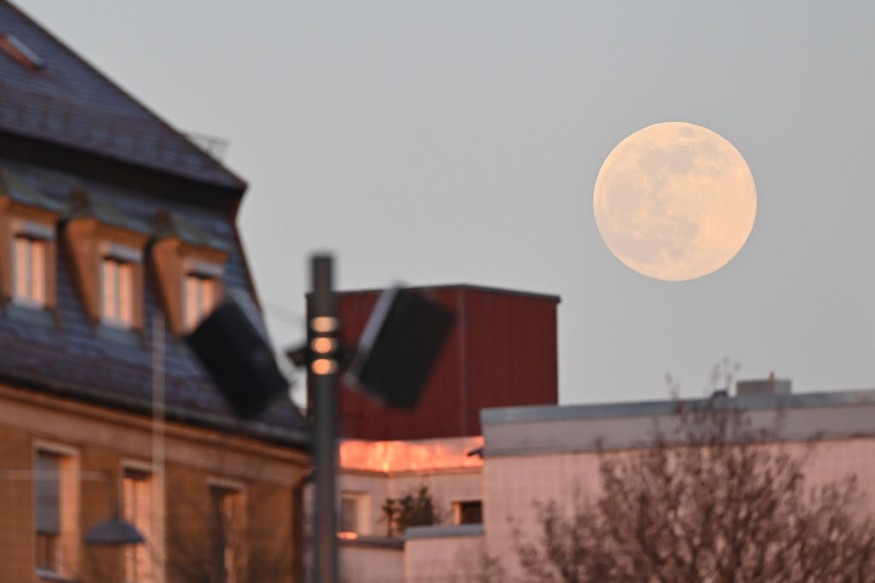Our pearly satellite will experience a complete lunar eclipse and its "super blossom blood moon" phase from Sunday evening until early Monday.
While the exact time varies on your location, the partial eclipse phase of the lunar eclipse begins around 10:28 p.m. EDT on May 15, TimeandDate.com reported.
The Blood Moon will peak on May 16 at 12:11 a.m. EDT and end at 1:55 a.m. EDT. The penumbral eclipse will begin approximately an hour before the partial eclipse and ends about an hour later.

Total Lunar Eclipse
Total lunar eclipses occur twice a year in some areas, when the sun, Earth, and moon all line up in a straight line. The Western Hemisphere will see another one in November 2022, but this weekend's eclipse coincides with maximum wax, making it a blood moon or the "most metal moon," per PopSci.
Sunlight refracted by air gases will bathe the orb in a penny-like glow as it passes through Earth's shadow. The moon will effectively loom in the sky for the duration of the event and will seem sufficiently bloody for at least half of it.
The aspect of the phenomena known as "super flowers" is less scientific. When a satellite's orbit gets it closer to Earth, it's called a super moon, and it seems to hang bigger in the sky. The flower is just a term for the apex of the lunar cycle, which occurs in May.
How To Watch
All of this adds together to make the upcoming eclipse nearly impossible to miss, even with the naked eye. A telescope or spotting scope will make watching more pleasant, but unlike a total solar eclipse, you won't need to wear eye protection.
ALSO READ : May 2022 Lunar Eclipse: Super Flower Blood Moon Coming to the Night Sky Sunday; How and When to Watch
Suppose you can't make it outside for the late-night event. In that case, NASA will broadcast it live from cities around North America, Chile, and Italy. Alternatively, simply check your social media accounts first thing in the morning for photographs and time-lapses.
One Out of Four Full Moons This Year
Fred Espenak, a retired NASA eclipse scientist, has been observing the night sky since he was 8 years old. He will be watching the upcoming lunar eclipse on Sunday.
Espenak accounts for variations in the moon's orbit during each lunar cycle, including the perigee (closest point) and apogee (furthest point) (furthest point). The Flower Moon is not a supermoon, according to NASA, which uses the rigorous 90 percent criteria, but the full moon in June will be.
According to Epsenak, there will be four full moons in a row and they are all supermoons. They will be visible on May 16, June 14, July 13, and August 12. However, he pointed out that such a run is not unusual. According to his website, 2023 and 2024 will experience four consecutive full supermoons. Even 2025 has three straight rows.
"Every 14 months or so, you get a series of moons that are further than that 90% threshold. So very often, every 14 months or so, we get two or more likely three to four," Epsenak explained, per Space.com.
He went on to say that the difference in size between the smaller full moon and the more giant full moon is so minute that even he can't discern the difference merely by gazing at the sky.
RELATED ARTICLE : International Observe The Moon Night 2021: How to Participate; Meaning of Lunar Phases
Check out more news and information on Space in Science Times.
© 2025 ScienceTimes.com All rights reserved. Do not reproduce without permission. The window to the world of Science Times.












